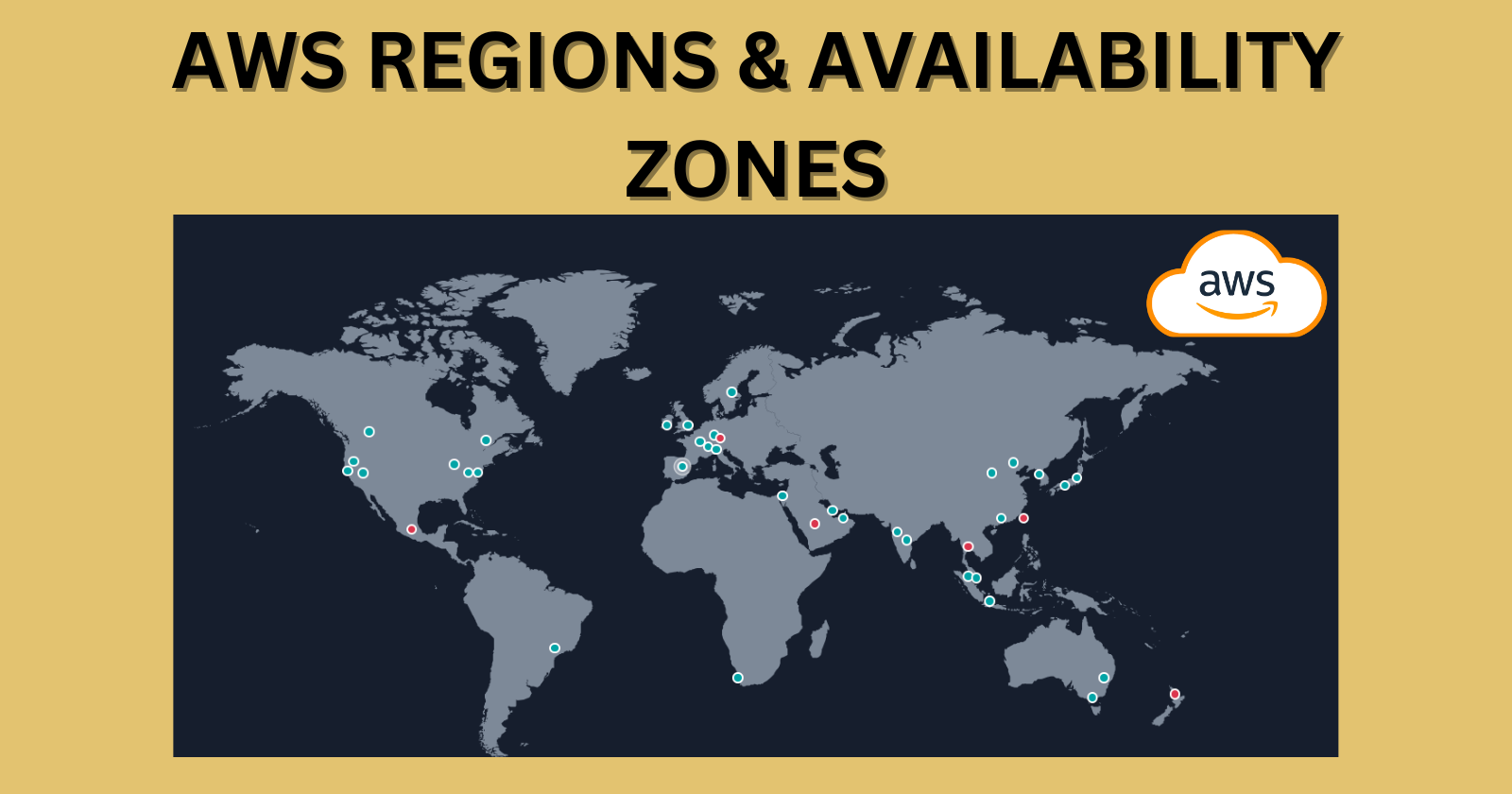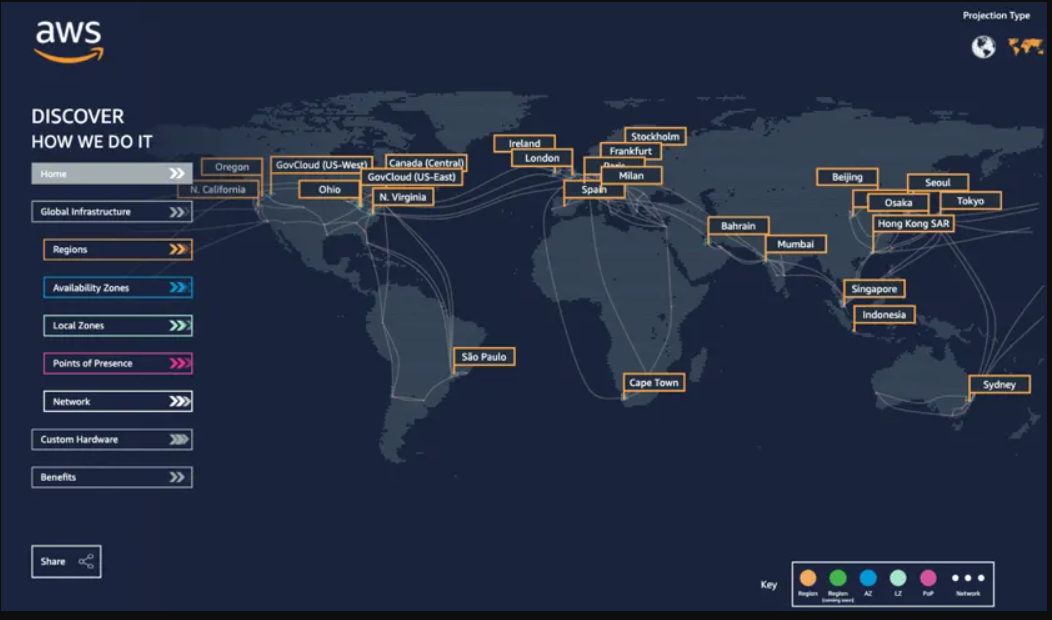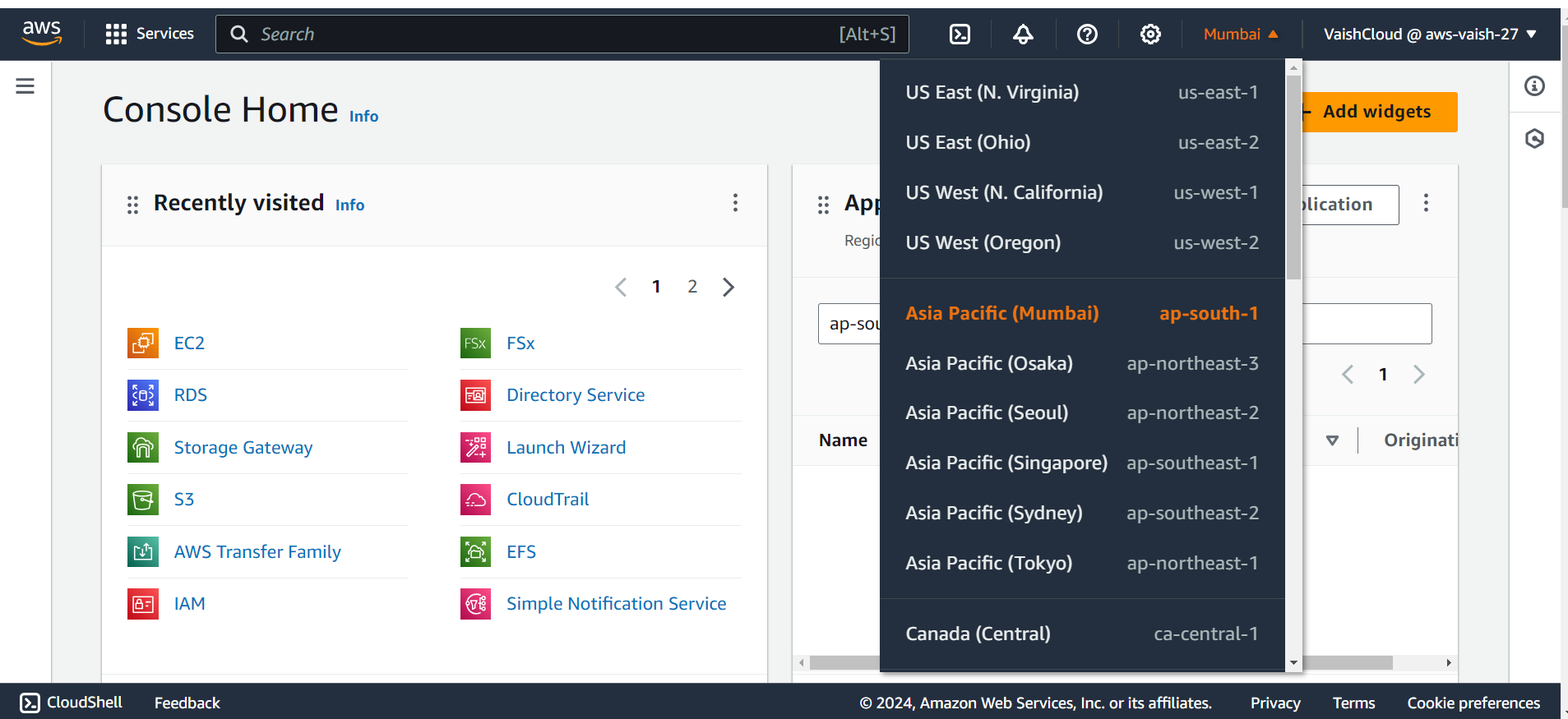🌍 Understanding AWS Regions and Availability Zones: Building a Strong Cloud Foundation #Day12
 Vaishnavi Modakwar
Vaishnavi Modakwar
Introduction
Amazon Web Services (AWS) is a leading cloud provider that offers a vast range of services across a global network of data centers. This global infrastructure is organized into Regions and Availability Zones (AZs), enabling businesses to deploy applications with high availability and low latency. Understanding how AWS Regions and AZs work is crucial for building scalable, resilient applications that can withstand failures and deliver a seamless experience to users worldwide.
What is an AWS Region?
- 🌎 Definition:
An AWS Region is a specific geographical area where AWS has data centers. Each Region is independent and offers services to users nearby, reducing latency and ensuring fast performance.
📍 Real-Time Example:
Imagine you have a mobile app that’s used by people in India. By choosing the ap-south-1a (Mumbai) Region, your app will load faster for Indian users because the data is stored closer to them.

Examples of AWS Regions
us-east-1 - North Virginia, USA
This is one of the most popular AWS Regions, often used for general-purpose workloads due to its large number of Availability Zones and services.us-west-2 - Oregon, USA
A common choice for West Coast businesses, offering low latency for users in that area.eu-west-1 - Ireland
The primary AWS Region for European customers, known for its reliability and wide range of services*.*ap-southeast-1 - Singapore
Serves as a hub for businesses in Southeast Asia, providing low-latency access to countries like Indonesia, Malaysia, and Thailand.ap-south-1 - Mumbai, India
This Region caters to the growing demand for cloud services in India, offering low-latency access for Indian users.
Benefits of Using Multiple Regions:
Geographic Redundancy: Ensures a regional failure doesn't impact global operations.
Improved Latency: Resources closer to end-users reduce latency.
Regulatory Compliance: Meets local data sovereignty laws.
Understanding Availability Zones (AZs)
Definition:
An Availability Zone (AZ) is a distinct data center within an AWS Region, each with its own independent power, cooling systems, and physical security. AZs are interconnected with low-latency, high-throughput, and highly resilient networking, allowing for seamless communication between them.
Importance of AZs:
AZs are crucial for ensuring high availability and fault tolerance in your applications. By isolating potential failures to a single AZ, you can prevent disruptions. Deploying your applications across multiple AZs guarantees that they will continue to operate even if one AZ experiences issues, providing robust reliability and uptime.
How AWS Regions and AZs Work Together
🔄 Data Replication:
AWS allows you to replicate your data across multiple AZs within a Region. This ensures that if one AZ fails, your app can switch to another AZ without any downtime.⚖️ Load Balancing:
By distributing traffic across multiple AZs, your app can handle more users efficiently, providing a seamless experience.🌐 Cross-Region Strategies:
For businesses with global users, deploying resources across multiple Regions ensures users get the fastest possible response times, no matter where they are.
Choosing the Right AWS Region and AZ
⏳ Latency and Performance:
Choose a Region close to your users to reduce latency and improve performance. For example, an app serving Asian users would benefit from being hosted in theap-southeast-1(Singapore) Region.📜 Compliance and Data Residency:
Some data might need to stay within specific geographical boundaries due to laws. AWS Regions help you meet these legal requirements by allowing you to select the right location.💰 Cost Considerations:
AWS costs can vary between Regions. It’s important to factor this into your decision when selecting where to host your services.
Best Practices for Using AWS Regions and AZs
🔗 Multi-AZ Deployments:
Always deploy your critical resources across multiple AZs within a Region for high availability.🌍 Region Pairing:
AWS pairs Regions to support data replication and disaster recovery. For instance,us-east-1(North Virginia) is paired withus-west-1(Oregon) to provide a backup in case of a disaster.📦 Backup and Disaster Recovery:
Set up regular backups in different Regions to protect your data from unexpected failures.
Real-World Examples
🏢 Case Study : Avoiding Downtime with Multi-AZ Deployment
Company: A leading online retail platform
Challenge: The company needed to ensure its website remained available during high-traffic periods, especially during major sales events. Any downtime would result in significant revenue loss and damage to their reputation.
Solution: The company deployed its website across multiple Availability Zones (AZs) within a single AWS Region. By using AWS services like Elastic Load Balancing and Auto Scaling, they distributed traffic evenly across these AZs. This setup ensured that if one AZ experienced a failure or went offline, the website would continue to run smoothly from the other AZs without any downtime.
Outcome: During a major sales event, one of the AZs experienced a temporary outage. However, thanks to their multi-AZ deployment, the company’s website remained fully operational, and customers continued shopping without any interruptions. This strategy saved the company from potential losses and maintained customer trust.
Conclusion
🏁 Wrapping Up:
Understanding AWS Regions and Availability Zones is key to building resilient, scalable applications. By strategically selecting Regions and AZs, you can ensure your app is always available, secure, and performs at its best, no matter where your users are.📢 Call to Action:
Ready to take your cloud skills to the next level? Start experimenting with AWS Regions and AZs today and see the difference it makes!
Like👍 | Comment🗨️ | Share🔃
Subscribe to my newsletter
Read articles from Vaishnavi Modakwar directly inside your inbox. Subscribe to the newsletter, and don't miss out.
Written by

Vaishnavi Modakwar
Vaishnavi Modakwar
👋 Hi there! I'm Vaishnavi Modakwar, a dedicated DevOps and Cloud Engineer with 2 years of hands-on experience in the tech industry. My journey in DevOps has been fueled by a passion for optimizing and automating processes to deliver high-quality software efficiently. Skills: Cloud Technologies: AWS, Azure. Languages: Python, YAML, Bash Scripting. Containerization: Docker, ECS, Kubernetes. IAC: Terraform, Cloud Formation. Operating System: Linux and MS Windows. Tools: Jenkins, Selenium, Git, GitHub, Maven, Ansible. Monitoring: Prometheus, Grafana. I am passionate about demystifying complex DevOps concepts and providing practical tips on automation and infrastructure management. I believe in continuous learning and enjoy keeping up with the latest trends and technologies in the DevOps space. 📝 On my blog, you'll find tutorials, insights, and stories from my tech adventures. Whether you're looking to learn about CI/CD pipelines, cloud infrastructure, or containerization, my goal is to share knowledge and inspire others in the DevOps community. Let's Connect: I'm always eager to connect with like-minded professionals and enthusiasts. Feel free to reach out for discussions, collaborations, or feedback. Wave me at vaishnavimodakwar@gmail.com